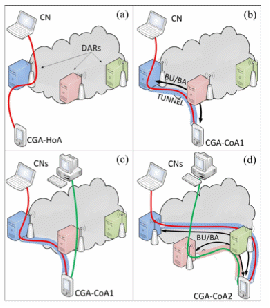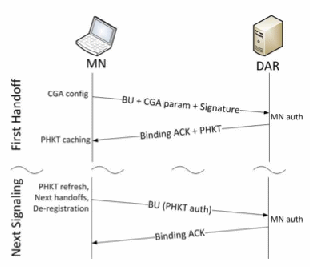The FAMA architecture researched by long-term collaborators Institute IMDEA Networks and University Carlos III of Madrid, has won the award for Best Paper at Mobiworld 2011.
The increasing demand for mobile data services has become an urgent reality for mobile operators, with ever-growing numbers of mobile data subscribers and mobile data applications, and increasing market penetration by mobile platforms such as Apple's iOS, Google's Android, RIM's BlackBerry and Microsoft's Windows Mobile. In the meantime, operators are migrating to fully IP-based networks for both voice and data, all of which has created a real need for IP mobility management architectures, which up to now have shown little or no deployment.
However, existing IP mobility architectures, such as Mobile IPv6 (MIPv6) or Proxy Mobile IPv6, rely to a certain extent on a centralized mobility anchor entity, which is in charge of both the control signaling and the user data forwarding. This creates limitations such as longer routing paths; scalability problems; a signaling overhead that can create longer handover latencies; a more complex network deployment; vulnerabilities due to the existence of a single potential point of failure; and a lack of granularity. Large operators are now looking for more distributed mobility solutions to solve these issues, and organizations such as IETF (Internet Engineering Task Force), through its Distributed Mobility Management effort, are trying to address these problems.
New research led by Fabio Giust, currently a Research Assistant at Institute IMDEA Networks, has presented a complete distributed solution based on Mobile IPv6, called Flat Access and Mobility Architecture (FAMA). While the concept of IP distributed mobility management is not new, this is the first complete description and evaluation of a concrete solution to the problem.
 The paper «Flat Access and Mobility Architecture: an IPv6 Distributed Client Mobility Management Solution», was researched by Fabio Giust, Antonio de la Oliva and Carlos Jesús Bernardos, the latter two affiliated with University Carlos III of Madrid. It won the Best Paper Award when presented on April 10th, 2011 at the 3rd IEEE International Workshop on Mobility Management in the Networks of the Future World (Mobiworld 2011), held in conjunction with The 30th IEEE International Conference on Computer Communications (IEEE INFOCOM 2011), he leading conference in the field of communications and computer networks research. The paper received great appreciation at the workshop and was also presented as a draft to the IETF.
The paper «Flat Access and Mobility Architecture: an IPv6 Distributed Client Mobility Management Solution», was researched by Fabio Giust, Antonio de la Oliva and Carlos Jesús Bernardos, the latter two affiliated with University Carlos III of Madrid. It won the Best Paper Award when presented on April 10th, 2011 at the 3rd IEEE International Workshop on Mobility Management in the Networks of the Future World (Mobiworld 2011), held in conjunction with The 30th IEEE International Conference on Computer Communications (IEEE INFOCOM 2011), he leading conference in the field of communications and computer networks research. The paper received great appreciation at the workshop and was also presented as a draft to the IETF.
The researchers kept most of the specifications introduced in the MIPv6 protocol, such as message formats and the sequence of operations, but also empowered the role of the Home Agent, a cardinal node in MIPv6, moving it from the core network to the edge, and replicating such nodes in all the access networks a mobile terminal can roam through. They designed a method allowing the terminal to split its communications in order to enable or disable mobility support in a dynamic fashion, and also changed the security associations in order to maintain the desired level of communications while reducing the burden on the nodes involved. The result is a concrete architecture that could allow operators to continue to handle their growing data traffic needs while allowing for less costly and more efficient network deployments.

Fig 1. FAMA architecture and example scenarios.

Fig 2. Signaling between the mobile node and the Distributed Access Router.
Read more:
 Download press release (139 KB)
Download press release (139 KB)
Publication: "Flat Access and Mobility Architecture: an IPv6 Distributed Client Mobility Management Solution"

